Interior
Does Interior Paint Fade Over Time
Step into the world of interior paint longevity as we unravel the mystery behind its fade over time.
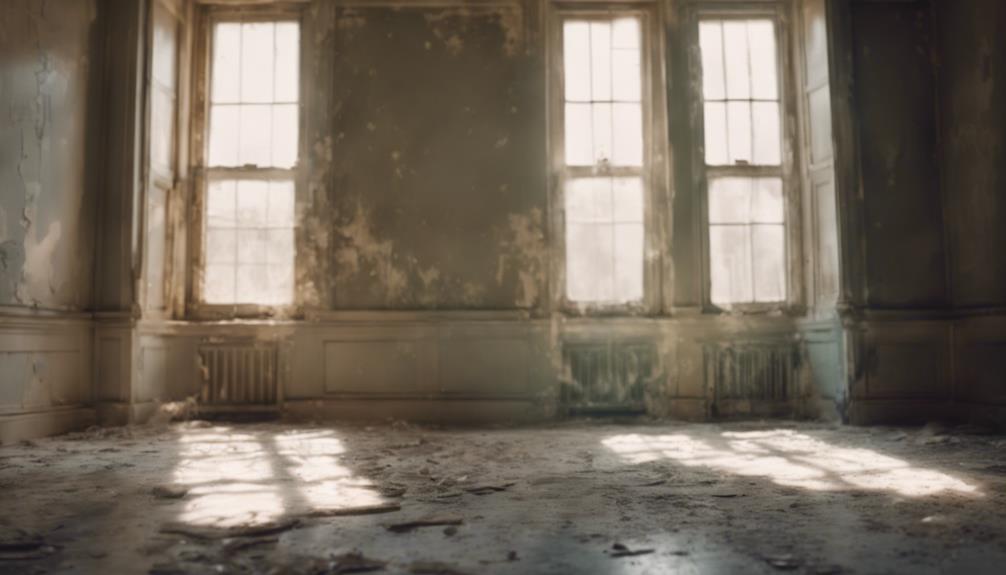
Yes, interior paint can fade over time. Factors like UV radiation, sunlight exposure, and paint quality all play a role. UV rays break down pigments in the paint, while sunlight speeds up color deterioration. Choosing high-quality, UV-resistant paint helps prevent fading. Applying multiple coats and using curtains to block direct sunlight can also protect your paint. Checking for fading regularly, especially on south-facing walls, can help maintain your paint's vibrancy. Remember, proper paint care can make a big difference in keeping your interior looking fresh and colorful. More insights on preserving your paint's longevity lie ahead.
Key Takeaways
- UV radiation accelerates paint fading over time.
- Quality paint with strong pigments resists fading.
- Multiple coats and premium paints offer better protection.
- Direct sunlight exposure speeds up color deterioration.
- Regular inspections and touch-ups maintain paint longevity.
Factors Affecting Interior Paint Fading
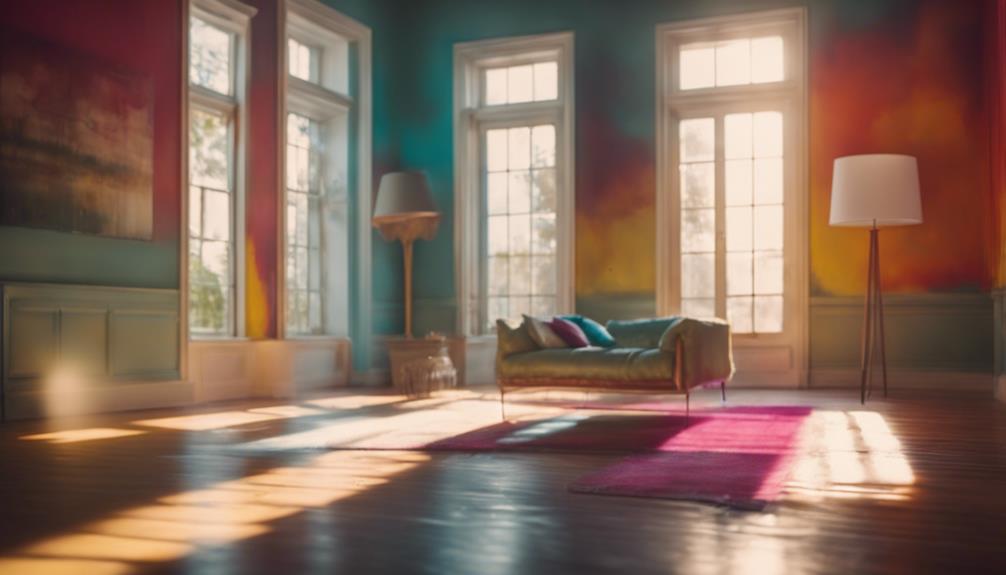
Interior paint fading is primarily influenced by sunlight exposure and UV radiation. When sunlight, containing UV rays, hits the painted surface, it starts a process that breaks down the pigments in the paint. These pigments are responsible for the color of the paint, so when they deteriorate, the paint fades.
The binders in the paint, which hold the pigments together and adhere them to the surface, also break down under UV exposure, further accelerating the fading process. Additionally, different paint finishes play a role in how quickly interior paint fades. Matte finishes tend to absorb more light, causing them to fade faster, while glossy finishes reflect more light and are more resistant to fading.
Choosing a quality paint with strong pigments and binders can help slow down the fading process. In addition, applying sufficient coats of paint ensures a more durable finish that resists fading over time.
Impact of Sunlight on Paint Fading
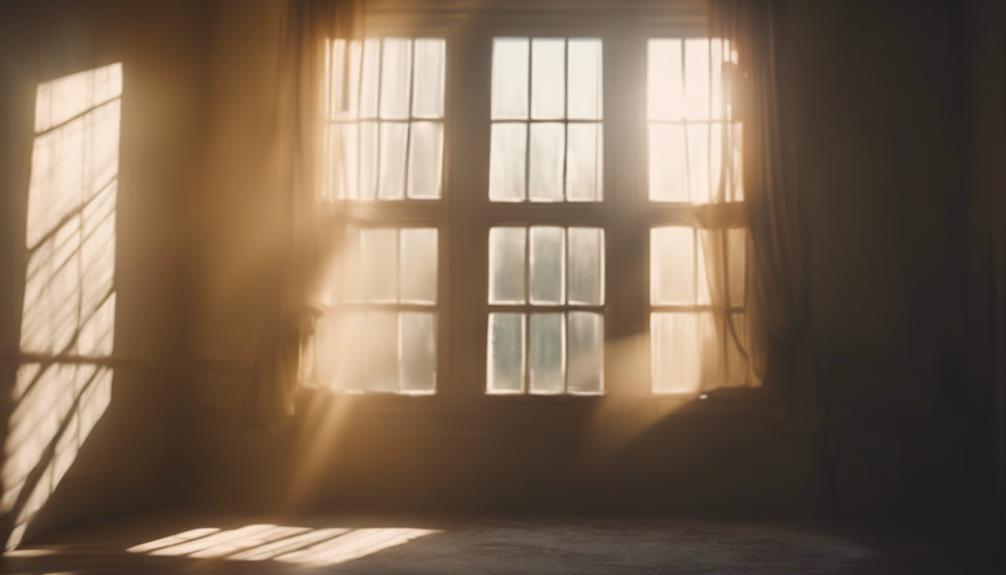
When exposed to sunlight, the breakdown of paint colors accelerates due to the deterioration of pigments, a key factor in interior paint fading over time. UV radiation from the sun plays an important role in this process, causing the pigments in the paint to deteriorate faster. Different paint finishes react diversely to sunlight exposure, impacting the rate at which fading occurs. The location of the painted surface within a room also affects the level of sunlight exposure it receives, thereby influencing the fading of the interior paint.
To prevent fading, consider using curtains to regulate the amount of sunlight that reaches the painted surfaces. Curtains can help control the intensity of sunlight exposure, protecting your interior paint from deteriorating rapidly. By managing the amount of sunlight that comes into a room, you can prolong the vibrancy of your paint colors and maintain the aesthetic appeal of your living spaces. Remember, taking small steps like using curtains can make a significant difference in preserving the beauty of your interior paint.
Role of UV Radiation in Fading
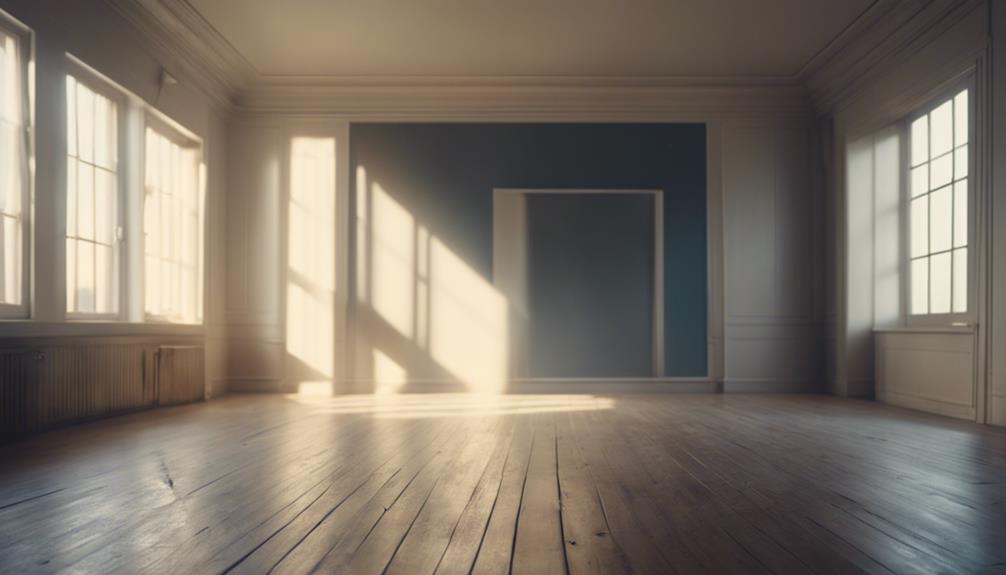
Exposure to UV radiation markedly accelerates the fading process of interior paint colors. When UV rays penetrate the surface of interior paint, they start to break down the pigments that give the paint its vibrant hue. This process leads to color deterioration over time, causing the paint to lose its original richness and intensity.
Direct sunlight, which contains high levels of UV radiation, can have a significant impact on the longevity and vibrancy of interior paint. To protect your paint from UV radiation, consider using UV-blocking curtains or blinds. These can help minimize the exposure of your interior paint to harmful UV rays, thereby extending its lifespan and maintaining its color quality.
Influence of Paint Quality on Fading
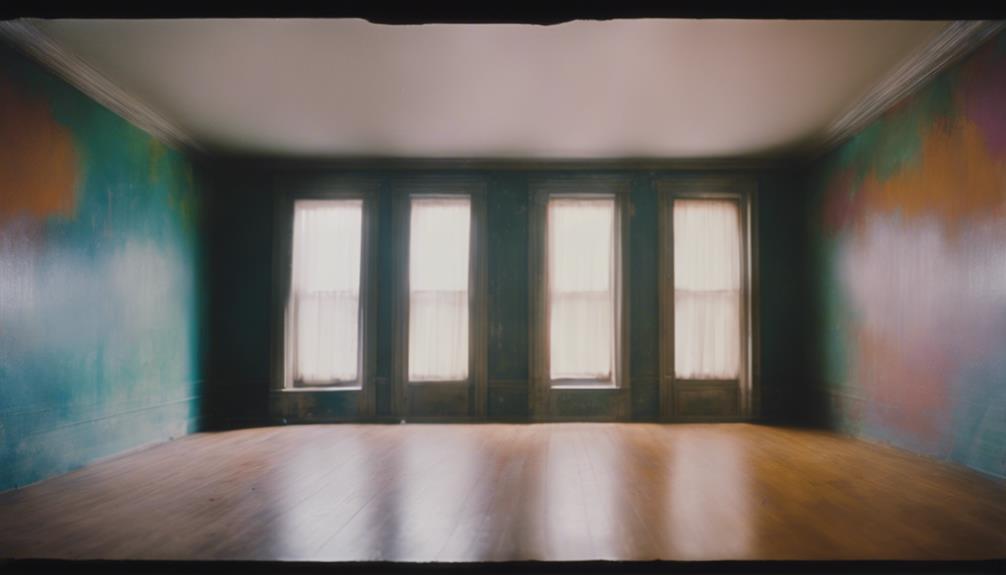
Investing in high-quality interior paint can greatly reduce fading over time. When it comes to interior paint, the quality plays a crucial role in determining how well it resists fading. Higher quality paints contain superior pigments and binders that help maintain color vibrancy for longer periods.
Premium paints are specifically formulated to have a higher resistance to fading compared to lower quality options. By choosing premium paints, you're ensuring a lasting and vibrant finish that will stand the test of time. The durability and longevity of your interior paint job are directly influenced by the paint quality you choose.
Strategies to Prevent Paint Fading
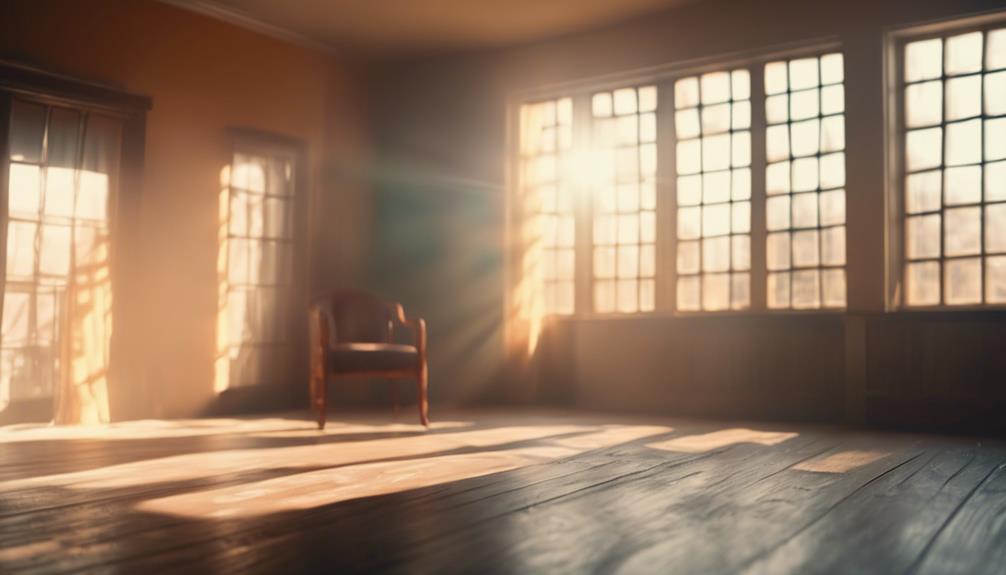
To prevent paint fading in your home, start by using curtains or blinds to shield your walls from direct sunlight.
Opt for premium paints that contain high-quality pigments and binders to guarantee long-lasting color vibrancy.
Regularly inspect your painted surfaces and consider applying multiple coats or selecting finishes with higher sheen levels for added protection against fading.
Sunlight Protection Tips
To protect your interior paint from fading due to sunlight, consider implementing these effective strategies.
Using UV-blocking curtains or blinds can shield your walls from the harmful effects of sunlight. Opt for paint with a higher sheen finish as it can reflect light, reducing the impact of sun exposure.
Choosing high-quality paint with superior pigments and binders is essential for color longevity. Additionally, applying multiple coats of paint enhances durability and helps maintain vibrancy.
If in doubt, consult a professional painter for advice on the best ways to prevent your interior paint from fading. Remember, premium paints offer superior protection against fading, ensuring long-lasting beauty for your walls.
Quality Paint Selection
For long-lasting protection against fading, prioritize selecting high-quality paint with superior pigments and binders. Premium paints are designed to offer better color retention and longevity for your interior surfaces.
Investing in quality paint guarantees that your walls maintain their vibrancy and resist fading over time. Superior paints with high-quality ingredients not only provide excellent fade resistance but also prove to be a cost-effective solution for achieving long-lasting results.
By choosing paint with strong color retention properties, you can effectively preserve the appearance of your interior walls and surfaces, keeping them looking fresh and vibrant for years to come.
Make the smart choice by opting for premium quality paint to safeguard against the effects of fading.
Regular Maintenance Checks
Regularly inspecting your painted surfaces for signs of fading is a proactive strategy to guarantee interior paint from losing its vibrancy over time. Implementing regular maintenance checks can help you identify areas prone to paint fading, especially in high-traffic or sun-exposed spots.
By addressing any signs of fading early on, you can prevent extensive paint fading and maintain the color integrity of your interior paint. Setting up a schedule for touch-ups and repainting as needed will secure that your painted surfaces stay vibrant for longer.
Don't wait for peeling, cracking, or discoloration to become noticeable; conducting frequent assessments allows for timely interventions to preserve the vibrancy of your interior paint.
Importance of Paint Finish Selection
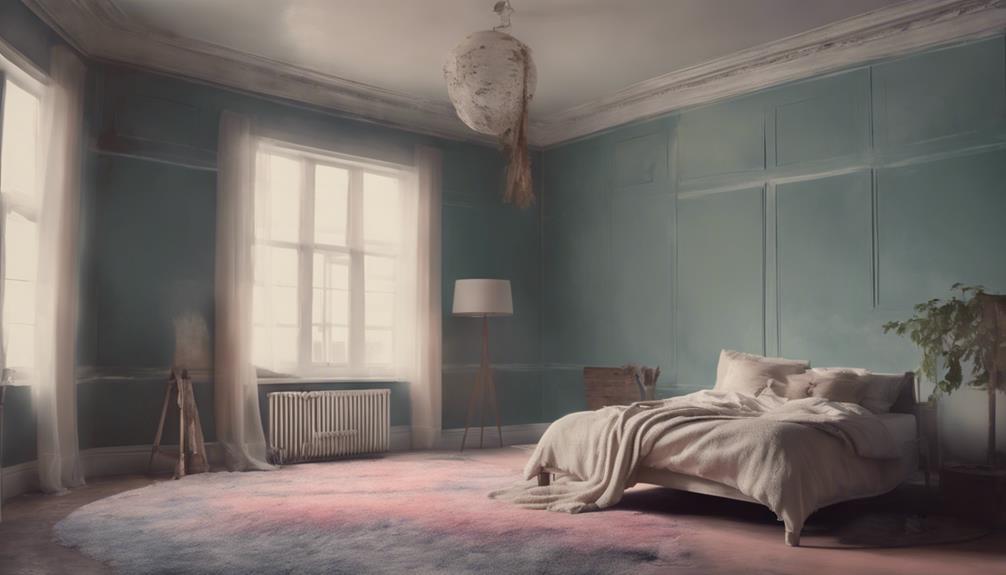
Selecting the appropriate paint finish is essential in preventing interior paint fading over time. When choosing the right finish for your walls, consider the following:
- Matte finishes: While elegant, they can absorb more light and may fade quicker over time.
- Satin finishes: These strike a balance between durability and ease of maintenance, making them ideal for high-traffic areas.
- Semi-gloss finishes: Reflecting more light, they're more resistant to fading and easier to clean.
- Higher sheen finishes: Their reflective properties not only enhance the aesthetics but also provide better protection against fading.
- Durability and Longevity: Picking a finish based on the room's purpose can significantly impact how long your paint job lasts.
Tips for Long-Lasting Interior Paint
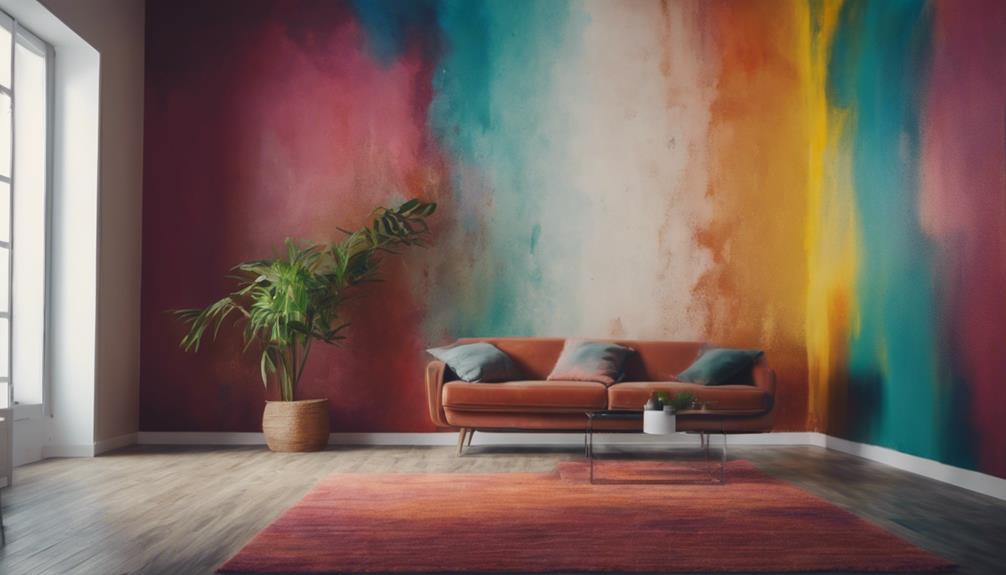
To guarantee long-lasting interior paint, prioritize investing in high-quality paint with superior pigments and binders. Quality paints with better pigments not only provide richer color but also resist fading over time.
When painting, consider hiring a Professional for the interior paint job. Their expertise guarantees proper application, which can greatly extend the lifespan of your paint.
Additionally, using UV-blocking curtains in rooms with direct sunlight can help prevent colors from fading faster. When choosing the paint finish, opt for one that suits the specific area of your home to ensure durability and longevity.
Regular maintenance, such as cleaning walls gently to avoid removing paint, can also help preserve the vibrancy of your interior paint.
Frequently Asked Questions
Does Interior Paint Change Color Over Time?
Yes, interior paint can indeed change color over time. Exposure to sunlight, heat, and other environmental factors can lead to fading and color shifts.
Opting for high-quality paint with strong pigments and binders can help maintain color consistency longer. Simple steps like using UV-blocking curtains and regular maintenance can slow down the color-changing process.
How Long Does Interior Paint Last on Walls?
When it comes to how long interior paint lasts on walls, several factors can influence its lifespan. Factors like sunlight exposure, room temperature fluctuations, and paint quality play a role in determining the durability of your paint job.
Does Interior Wall Paint Fade?
Interior wall paint can indeed fade over time due to various factors like sunlight exposure, temperature changes, and paint quality.
UV rays break down pigments, leading to color fading. Opt for higher sheen finishes as they resist fading better than matte ones. Blocking direct sunlight with curtains or blinds can also help.
Quality paints with superior ingredients last longer without fading. So, yes, interior wall paint can fade, but you can take steps to prevent it!
How Much Does Paint Fade Over Time?
Over time, interior paint can fade, especially if exposed to sunlight and fluctuations in temperature. Darker colors tend to fade faster due to light absorption.
Quality paint can last 5-10 years before showing signs of fading. To combat this, regular maintenance like cleaning and avoiding direct sunlight can help.
Opting for high-quality paint with better pigments and binders can greatly reduce the rate of fading.
Conclusion
To sum up, interior paint can fade over time due to factors like sunlight exposure and paint quality. Just like how a sunny day can fade a colorful beach towel left out too long, UV radiation can do the same to your walls.
By choosing high-quality paint, selecting the right finish, and taking steps to protect your walls, you can keep your interior looking fresh and vibrant for years to come. Remember, a little prevention goes a long way in preserving your paint job!
Interior
Can Interior Design Help Beat the Heat
Seeking relief from the heat? Discover how interior design strategies can transform your space into a cool oasis.
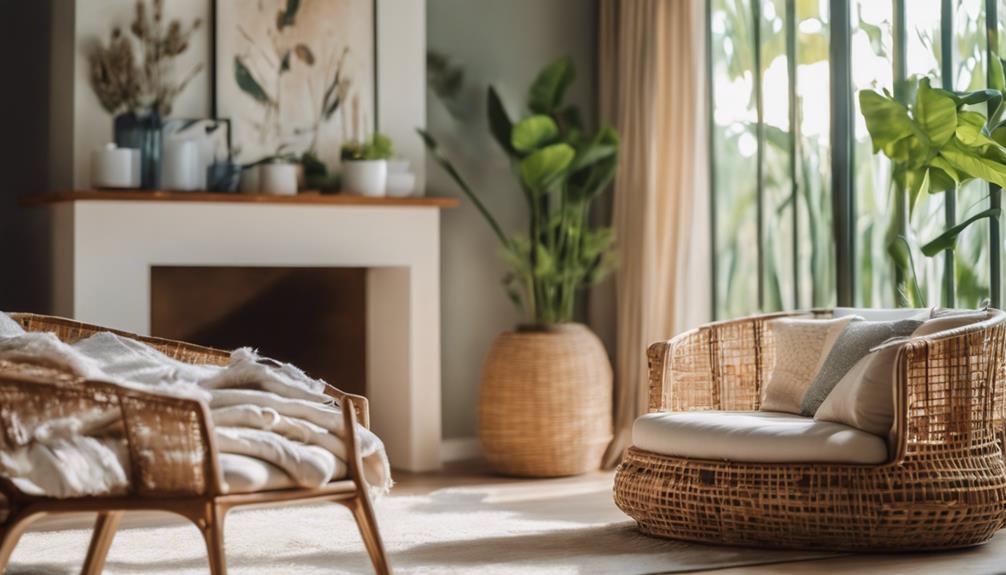
When battling the heat, interior design can be your ally! Incorporate shading elements like awnings and umbrellas for relief from the sun. Opt for light-colored fabrics such as cotton or linen to reflect heat and create a rejuvenating feel. Boost air circulation with ceiling fans and place them strategically for maximum cooling. Create outdoor cooling areas with shade options, water features, and cooling fabrics. Harness natural shade by planting trees strategically. Design cooler indoor spaces with light colors, natural elements, and the use of water features. Implement cool color schemes for a calming effect and enhanced comfort. Discover how to beat the heat with clever interior design!
Key Takeaways
- Incorporate light-colored fabrics and cooling elements to reduce heat indoors.
- Use air circulation tools like fans strategically for improved indoor cooling.
- Design outdoor spaces with shade options and cooling fabrics for comfort.
- Utilize natural shade from trees to cool indoor environments effectively.
- Implement cool color schemes and water features for a refreshing indoor ambiance.
Utilizing Shading Elements for Cooling
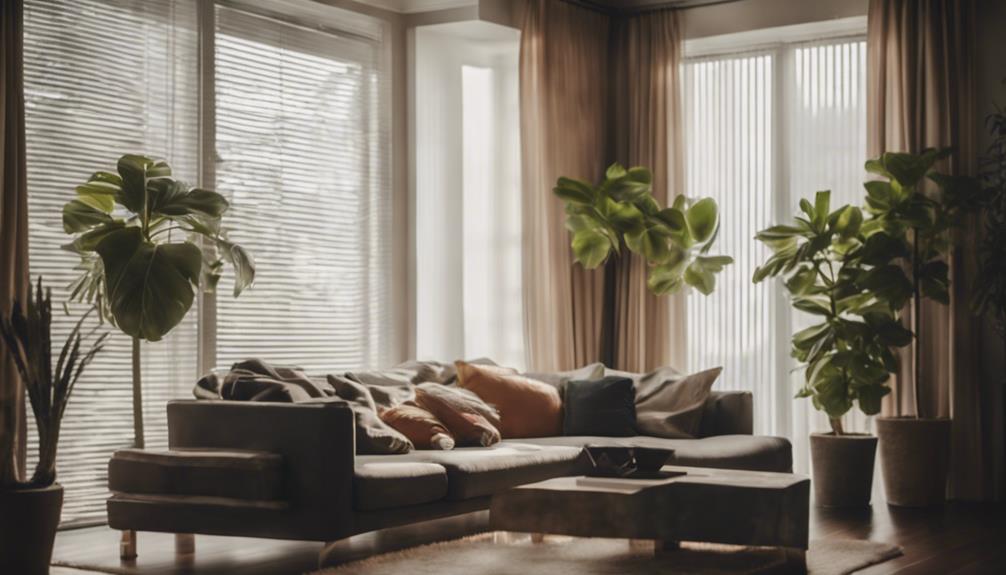
When designing for cooling, consider utilizing shading elements such as awnings or umbrellas to effectively reduce heat in outdoor spaces. These shading elements not only provide relief from the sun but also add a stylish touch to your outdoor area. By incorporating awnings or umbrellas, you create shaded spots where you can relax without worrying about the scorching heat. This simple addition can make a significant difference in how comfortable your outdoor space feels during hot days.
Shading elements like awnings also help protect your outdoor furniture from sun damage. They act as a barrier, preventing direct sunlight from fading or deteriorating your furnishings. Additionally, these elements contribute to the overall aesthetic appeal of your outdoor space, enhancing its visual appeal while keeping it cool and enjoyable.
Incorporating Light-Colored Fabrics
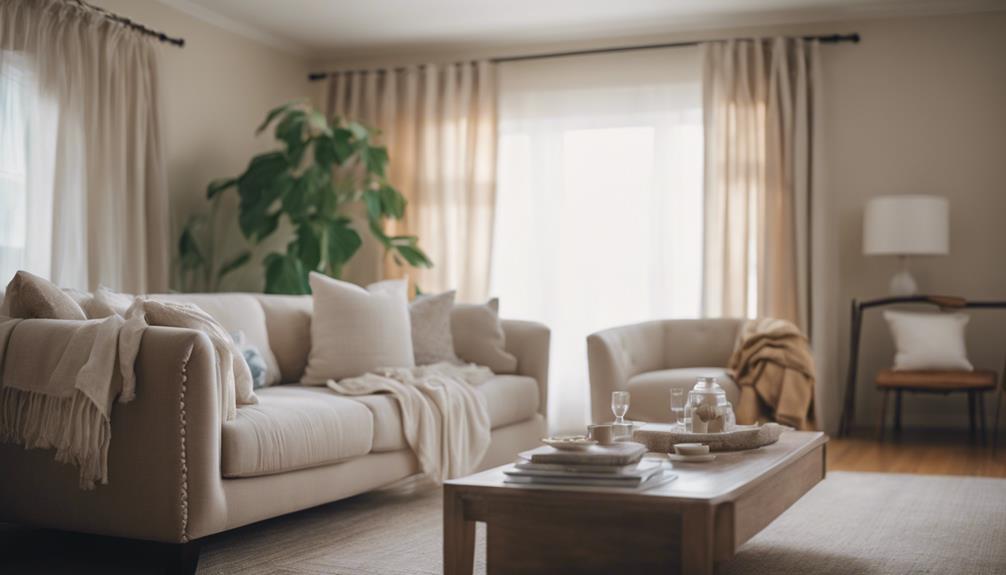
Consider enhancing the cooling effect in your outdoor space by incorporating light-colored fabrics that reflect heat and create a more invigorating environment. In hot climates, choosing light-colored fabrics for your outdoor furniture, cushions, and decor can make a significant difference in how you experience your outdoor space. Light-colored fabrics like cotton or linen not only look stylish but also help to keep the area cooler by reflecting the sun's rays instead of absorbing them. Opting for UV-resistant and heat-reflective fabrics can further amplify this cooling effect, providing a revitalizing oasis on your patio or outdoor lounge. By selecting the right materials and colors, you can transform your outdoor area into a more pleasant and enjoyable retreat during the warm weather.
| Light-Colored Fabrics | Benefits | Example |
|---|---|---|
| Cotton or Linen | Enhance comfort | Light-colored cushions |
| UV-resistant fabrics | Reduce heat retention | Heat-reflective umbrella |
| Heat-reflective fabrics | Provide a cooling effect | Light-colored awnings |
Enhancing Air Circulation With Fans
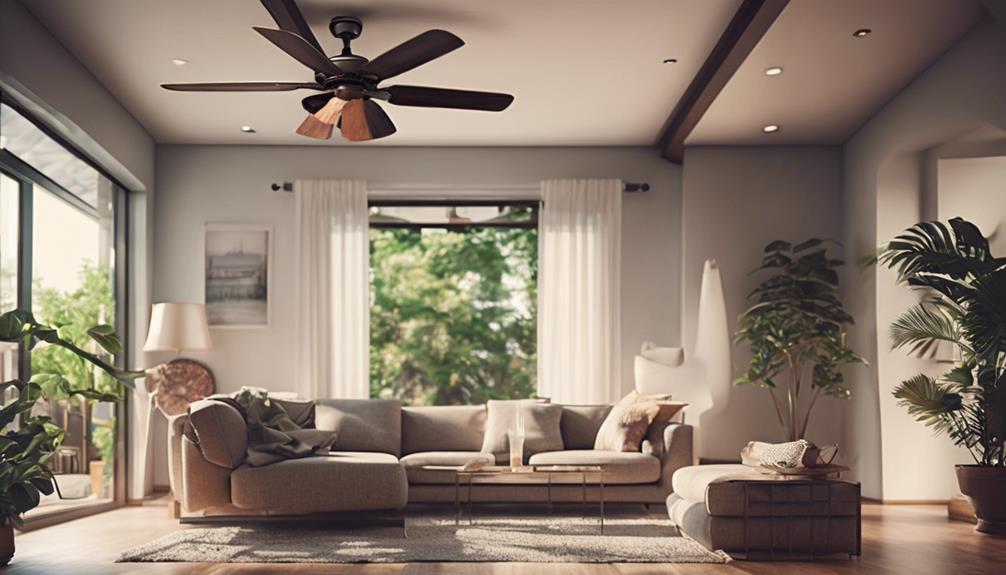
To improve air circulation and enhance cooling in your indoor spaces, consider installing a ceiling fan as a cost-effective solution. Ceiling fans can help create a breeze that makes you feel cooler by circulating the air in the room. Here are three tips to make the most of your ceiling fan for better air circulation and a more comfortable environment:
- Combine with Standing Fans: Using standing fans in conjunction with your ceiling fan can boost overall air movement, helping to distribute cool air more effectively throughout the room.
- Maximize Placement: Proper placement of your ceiling fan is key to maximizing its cooling benefits. Make sure it's positioned in the center of the room and at the right height to ensure the best airflow.
- Adjust Settings: Experiment with different fan speeds to find the setting that provides the best balance of air circulation and comfort. In hot weather, a higher speed can help create an invigorating breeze, while lower speeds can maintain a gentle circulation of cool air.
Creating Outdoor Cooling Spaces
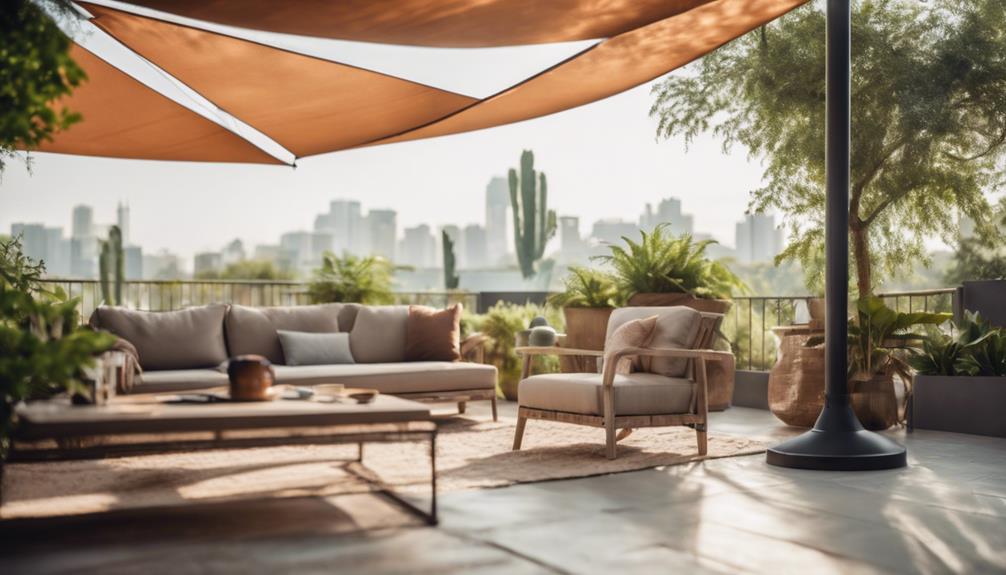
Looking to beat the heat outdoors? Consider adding shade options like pergolas or shade sails to block harmful UV rays and create a cool retreat.
Enhance the ambiance with outdoor water features such as fountains, which not only add a touch of tranquility but also cool the air through evaporation.
Opt for cooling fabrics in your outdoor lounging areas to promote airflow and keep you comfortable during those scorching days.
Shade Options
Create a relaxing outdoor retreat by incorporating shade options like awnings or umbrellas to keep your space cool and protected from the sun. When setting up your outdoor cooling oasis, consider the following:
- Awnings: These can be attached to your home or freestanding, providing versatile shade solutions that block the sun and reduce heat absorption into your outdoor space.
- Umbrellas: Portable and adjustable, umbrellas offer flexibility in shading different areas of your outdoor retreat, allowing you to move them as the sun's position changes throughout the day.
- Outdoor Fans: Installing outdoor fans can help circulate air effectively, creating a gentle breeze that enhances comfort and keeps you cool during hot weather.
Water Features
Enhancing your outdoor space with water features can greatly contribute to creating a cool and relaxing oasis during hot weather. Installing a swimming pool or incorporating water elements like fountains or ponds can help you stay cool and comfortable outdoors. These water features not only add value to your property but also enhance the overall outdoor living experience.
Consult professionals for guaranteeing safe installation to maintain functionality and aesthetic appeal. Water features play a significant role in passive cooling, as they can lower the ambient temperature and improve comfort in your outdoor areas.
Additionally, the visual and auditory appeal of water features, such as the sound of flowing water, can make your outdoor spaces more inviting and enjoyable for relaxation and entertainment.
Cooling Fabrics
To maintain a cool and inviting outdoor atmosphere, consider incorporating cooling fabrics into your outdoor space design. Here are three tips to help you create a rejuvenating outdoor oasis:
- Light-colored fabrics like cotton and linen: Opt for light-colored fabrics to reflect heat and keep your outdoor space cooler.
- Materials that feel cool to the touch: Choose materials like bamboo or silk that feel cool to the touch, enhancing comfort in your outdoor areas.
- Heat-reflective fabrics: Select heat-reflective fabrics for outdoor furniture and curtains to contribute to a more comfortable environment.
Harnessing Natural Shade With Trees
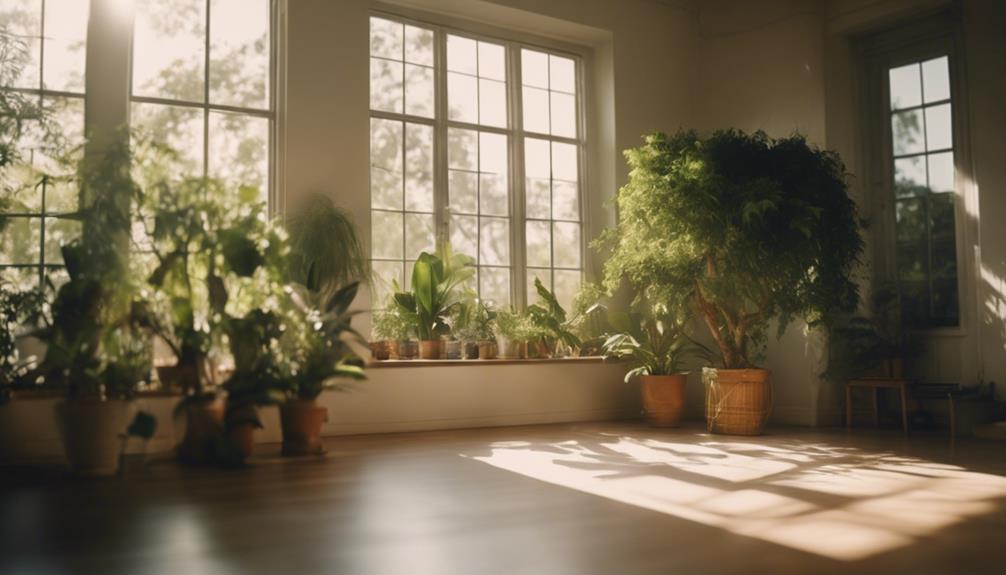
When it comes to cooling your home naturally, strategic tree placement is vital.
Choosing the right tree species, like deciduous ones, can offer shade in the summer and sunlight in the winter.
Remember that proper tree maintenance is essential for keeping your shaded oasis healthy and thriving.
Tree Positioning for Shade
Strategically positioning trees around your home can effectively harness natural shade to reduce indoor heat gain. Here are three key tips for maximizing the shade provided by trees:
- Deciduous Trees: Opt for deciduous trees when planning your landscaping. These trees offer shade during the hot summer months while allowing sunlight to filter through in the winter, helping to naturally regulate indoor temperatures.
- East and West Placement: Place trees strategically on the east and west sides of your home. Trees on the east side can block the morning sun, while those on the west side can provide shade from the intense afternoon heat.
- Window Coverage: Plant trees near windows to prevent direct sunlight from entering and heating up your home. This not only helps in cooling your interior but also adds to the overall beauty of your property.
Tree Species Selection
Selecting the appropriate tree species plays a crucial role in effectively harnessing natural shade to cool your home during hot seasons. Deciduous trees like Maple or Oak are excellent choices as they provide shade in the summer when their leaves are full but allow natural light to filter through during the cooler months when they shed. On the other hand, evergreen trees like Pine or Cedar offer continuous shade and protection from the sun's rays throughout the year. Strategic planting of trees around your home can greatly reduce indoor temperatures by up to 20 degrees Fahrenheit. Consider placing trees on the south and west sides of your house to block the sun's strongest rays in the afternoon, helping to minimize heat gain indoors.
| Deciduous Trees | Evergreen Trees |
|---|---|
| Maple | Pine |
| Oak | Cedar |
Maintenance for Healthy Trees
To maintain healthy trees for ideal shade coverage, regular pruning and trimming are essential. Here are three key maintenance practices to make sure your trees are thriving and providing excellent shade:
- Proper Watering and Fertilizing: Maintaining a consistent watering schedule and providing the right nutrients through fertilization are important for tree health and sustained shade provision.
- Pest and Disease Monitoring: Regularly check your trees for signs of pests and diseases to prevent damage and guarantee continuous shade benefits.
- Mulching: Applying mulch around the base of trees helps retain moisture, regulate soil temperature, and promote tree vitality, contributing to better shade coverage.
Designing for Cooler Indoor Environments
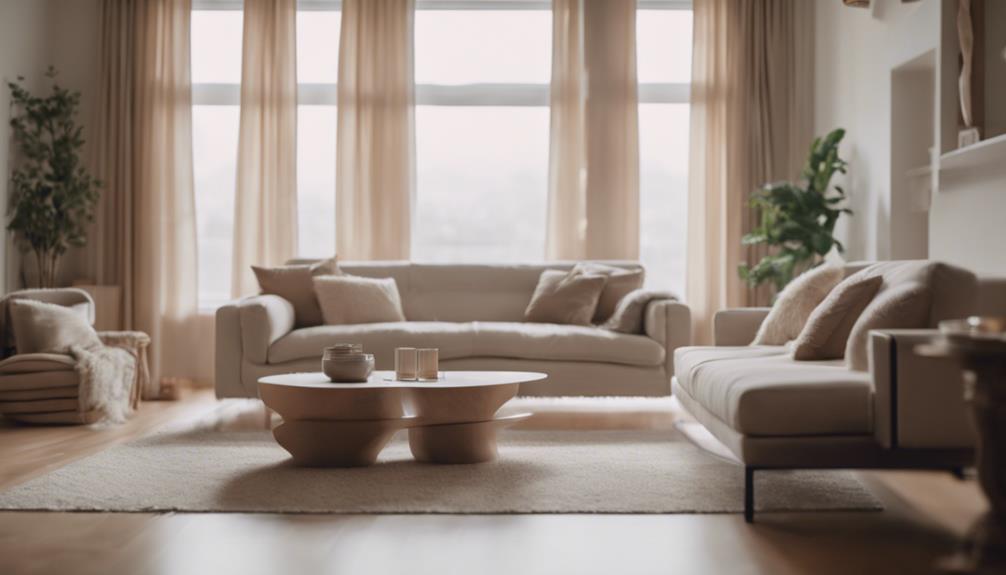
When designing for cooler indoor environments, consider incorporating light and airy color schemes like pastel blues and soft greens to help reflect sunlight and maintain a comfortable temperature. Adding natural elements such as indoor plants and wooden accents can also aid in cooling interiors and creating an invigorating ambiance.
To maximize airflow and ventilation, utilize ceiling fans and open windows during cooler times to help regulate indoor temperatures effectively. Avoiding heat-generating appliances and opting for cooling materials like cotton and linen for bedding can further enhance comfort during hot weather.
Maximizing Cooling Effects of Water Features
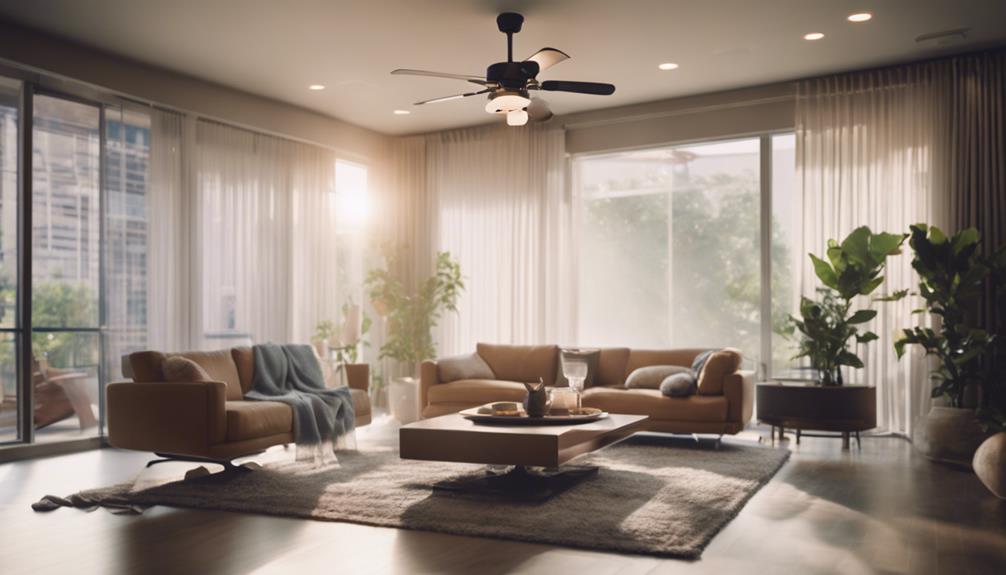
Consider incorporating water features like fountains and ponds to maximize the cooling effects in your outdoor space. Water features can notably lower ambient temperatures by utilizing evaporative cooling, where the evaporation from water surfaces absorbs heat, creating a revitalizing atmosphere.
Here are three ways to enhance the cooling effect of water features:
- Strategic Placement: Position water features strategically in your outdoor space to optimize the cooling effect. Placing fountains or ponds in areas where they can catch the breeze will help circulate the cool air they produce.
- Proper Maintenance: Regularly maintain your water features to make sure they function efficiently. Clean the water surfaces to promote better evaporation and consider adding aquatic plants to enhance the cooling effect.
- Size Matters: The size of your water feature can impact its cooling capabilities. Larger water features tend to have a greater cooling effect as they provide more surface area for evaporation, effectively reducing the surrounding temperatures.
Implementing Cool Color Schemes
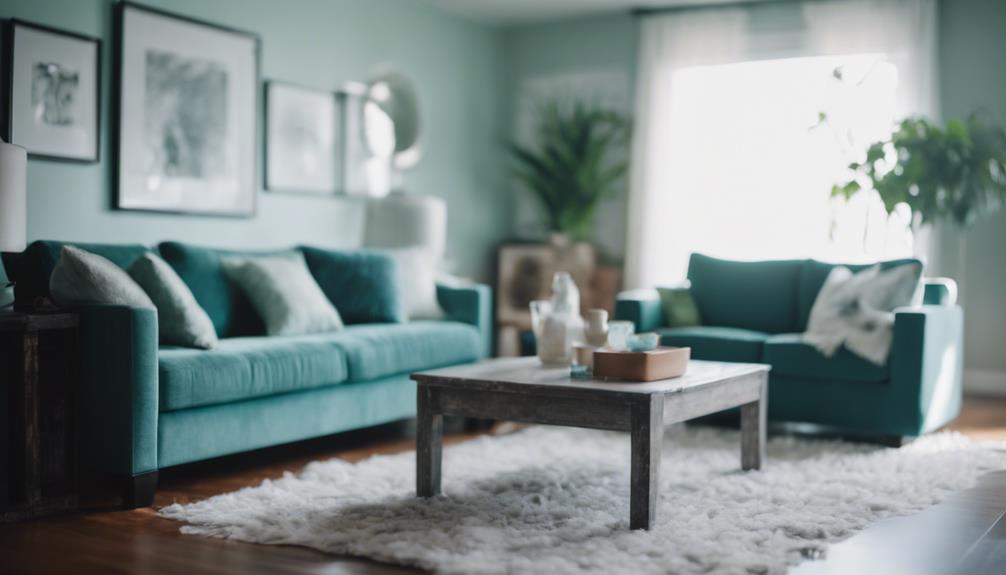
Cool color schemes, such as pastel blues and soft greens, can effectively reflect sunlight to create a soothing atmosphere in your living space. By incorporating light-colored sheer curtains and opting for calming whites, you can enhance this effect and maintain a rejuvenating ambiance indoors. Choosing cool color schemes is not only aesthetically pleasing but also a practical way to combat heat waves and keep your home cool during hot weather.
To emphasize the benefits of implementing cool color schemes, let's take a look at the following table:
| Cool Color Scheme Benefits |
|---|
| Reflect sunlight effectively |
| Create a soothing atmosphere |
| Aid in maintaining cooler interiors |
| Enhance the rejuvenating ambiance |
Balancing Aesthetics and Temperature Control
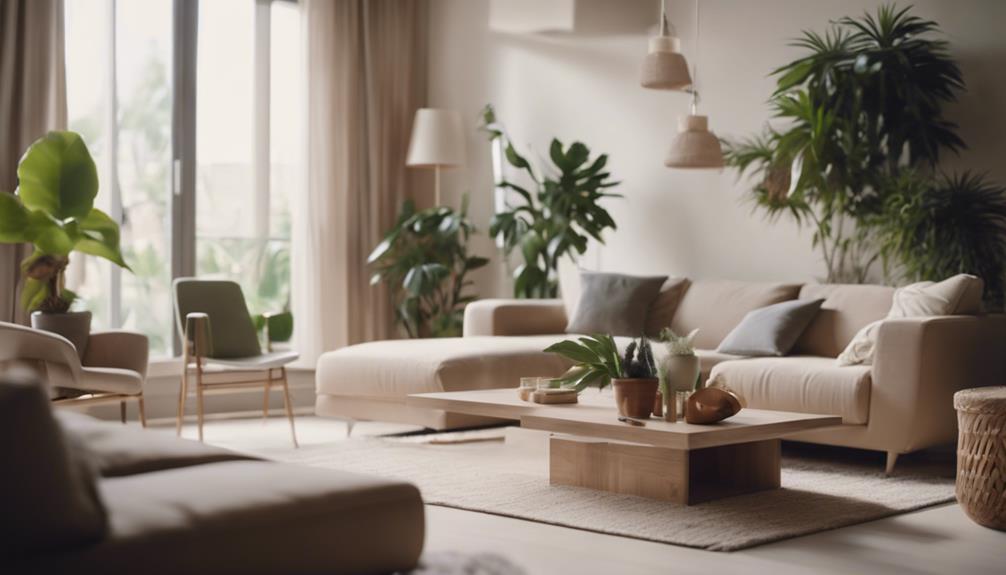
To maintain both a stylish look and comfortable temperature in your living space, it's important to strike a balance between aesthetics and effective temperature control strategies. Here are some tips to help you achieve this balance:
- Optimizing Airflow: Positioning furniture to allow for better air circulation and using fans strategically can help cool down your space without sacrificing style. Enhancing airflow prevents stagnant hot air pockets from forming, keeping your room breezy and pleasant.
- Choosing Cooling Materials: Selecting fabrics like cotton, linen, and bamboo for upholstery and curtains can aid in temperature control. These materials aren't only stylish but also breathable, allowing for better heat dissipation and creating a cooler atmosphere in your home.
- Light-Colored Aesthetics: Light and airy color schemes can visually expand your space while reflecting sunlight to keep temperatures lower. Embracing light-colored walls, furniture, and decor can help maintain a sense of coolness and brightness in your interior design.
Frequently Asked Questions
What Is the Biggest Problem in Interior Designing?
In interior design, addressing these challenges is essential for creating comfortable and sustainable living environments. The biggest problem often revolves around poor insulation and inefficient building designs. These issues lead to increased reliance on air conditioning systems, driving up energy costs and impacting comfort levels. Without proper ventilation and shading, indoor spaces struggle to maintain ideal temperatures.
Overuse of glass in architecture can also contribute to heat gain problems. Tackling these challenges is vital for creating comfortable and sustainable living environments.
What Problems Does Interior Design Solve?
Interior design solves various issues, enhancing comfort and functionality. It optimizes space, improves aesthetics, and boosts mood.
By incorporating natural elements, strategic layouts, and cooling materials, interior design combats heat waves and creates a rejuvenating environment. Efficient use of colors, furniture placement, and ventilation techniques contribute to cooler interiors.
Choosing the right design elements helps maintain a comfortable atmosphere, making your space a cozy retreat from the heat.
What Are the Disadvantages of Interior Design?
When considering the disadvantages of interior design, it's crucial to weigh the costs, potential disruptions, and upkeep involved. Expenses for furniture, decor, and professional services can add up quickly. Renovations may require temporary relocation and disrupt your routine. Trends can become outdated, leading to frequent updates. Changing tastes may leave you dissatisfied with previous choices. Maintaining intricate designs can be time-consuming.
These factors highlight the challenges of interior design beyond just the aesthetic appeal.
How Does Interior Design Help People?
Interior design plays a vital role in shaping how people experience and interact with their surroundings. By incorporating elements like color, furniture, and decor, interior design enhances comfort and functionality in homes and workplaces. It can improve mood, productivity, and overall well-being by creating visually appealing and organized environments.
Whether it's through maximizing space, implementing ergonomic solutions, or enhancing aesthetics, interior design plays an essential role in shaping how people experience and interact with their surroundings.
Conclusion
Now that you've learned how interior design can help beat the heat, you're ready to transform your space into a cool and revitalizing oasis.
By incorporating shading elements, light-colored fabrics, fans, outdoor cooling spaces, trees, water features, and cool color schemes, you can create a comfortable environment even on the hottest days.
So go ahead, get creative with your design choices and stay cool all summer long!
Interior
Why Is Interior Painting so Expensive
Nail down the reasons why interior painting is expensive, from premium paint to expert craftsmanship, uncover the true value behind the cost.

Interior painting is expensive due to multiple factors. Quality paint impacts cost greatly, with premium brands like Sherwin Williams and Benjamin Moore offering durability. Skilled expertise is essential for a professional finish, requiring meticulous prep work that justifies the higher pricing. Proper surface preparation guarantees a flawless result, enhancing paint adhesion and longevity. When investing in quality materials, around 15-20% of the total cost could be attributed to paint alone. Experienced painters offer specialized skills, color matching proficiency, and a deep understanding of techniques. The longevity and durability of the results make the investment in interior painting worth it.
Key Takeaways
- Quality paint and materials impact longevity and finish, contributing around 15-20% of total cost.
- Labor intensity involves meticulous preparation, skilled expertise, and attention to detail, justifying higher pricing.
- Surface preparation ensures flawless finish, adhesion, and longevity, highlighting the importance of professional prep work.
- Professional skill and expertise guarantee a polished finish, with specialized techniques and color matching adding value.
- Opting for cheaper bids may compromise quality, while investing in experienced painters justifies the cost for exceptional results.
Factors Affecting Paint Costs
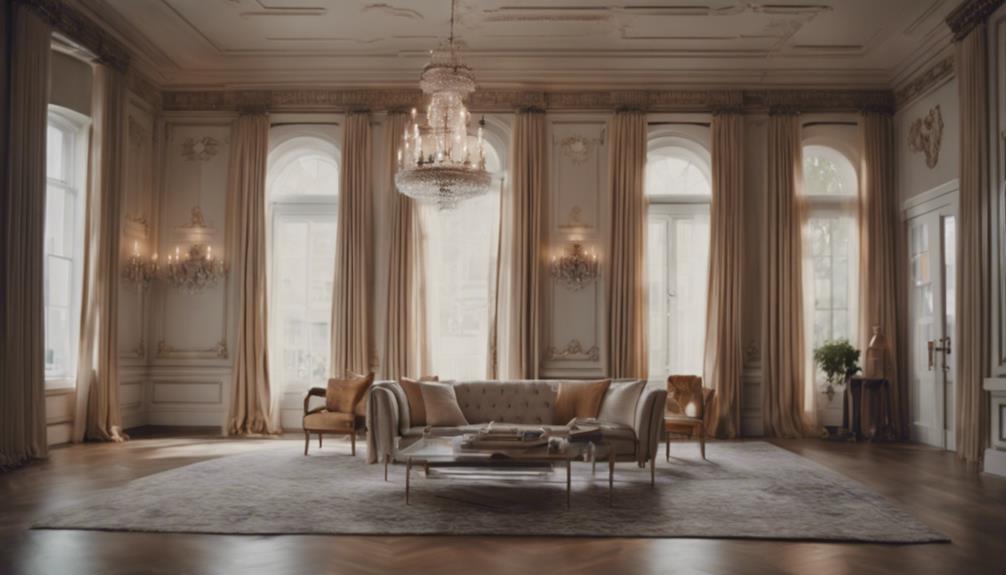
When considering interior painting costs, the factors influencing the price of paint play a pivotal role in determining the overall expense. The quality of the paint used can greatly impact the cost of an interior painting project. Different levels of quality come with varying price points, so it's important to establish your quality expectations and goals upfront. Clear communication of these expectations is important to make sure that you get the desired result without any misunderstandings that could lead to additional costs.
It's important to note that opting for cheaper bids may compromise the quality of the paint job. While it may seem like a cost-effective choice initially, you could end up spending more in the long run to fix any issues that arise from using lower-quality materials. Evaluating the value of overhead costs can also help you understand pricing variations and make an informed decision when selecting the quality of paint for your interior painting project.
Labor Intensity of Interior Painting
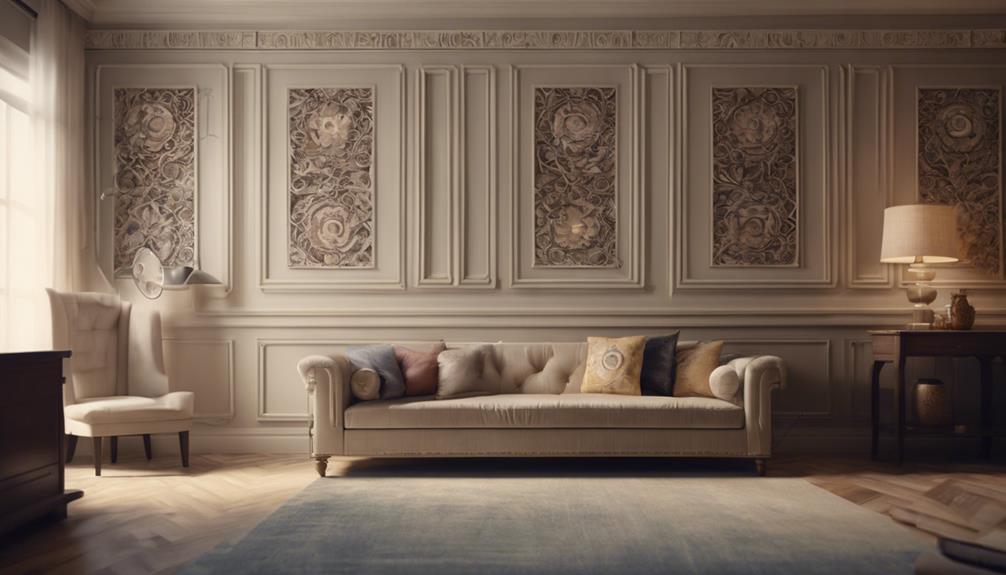
The labor intensity of interior painting demands meticulous preparation and skilled expertise to achieve a professional finish, impacting overall project costs.
Quality paint, prep work, and labor costs are significant components contributing to the expense of interior painting. Skilled labor is vital for ensuring that surfaces are properly prepped, painted, and finished to high standards. Professional painters invest time in sanding walls, filling holes, and applying primer before even starting the actual painting process, which adds to the labor costs.
The time-consuming nature of interior painting, including the application of multiple coats and detailed work, further justifies the higher pricing of this service. The attention to detail, precision, and expertise required in interior painting highlight the importance of hiring professionals for the job.
Impact of Surface Preparation

Proper surface preparation plays a pivotal role in achieving a flawless and durable interior paint finish. When it comes to painting your walls, surfaces need to be meticulously prepared to guarantee the paint adheres properly and lasts longer. Surface preparation involves tasks like sanding, filling holes, and applying primer to create a smooth canvas for the new paint. Professional painters emphasize the importance of thorough surface preparation as it not only enhances the final look but also contributes to the longevity of the paint job, reducing the need for frequent touch-ups or repainting.
Investing in professional surface preparation might seem like an added cost, but it ensures a high-quality finish that justifies the expense. Without proper preparation, surface imperfections can affect the paint quality and overall appearance of your walls. The time, skill, and specialized tools required for thorough surface preparation contribute to the overall cost of interior painting but result in a smooth, long-lasting paint job that you'll enjoy for years to come.
Quality of Paint and Materials
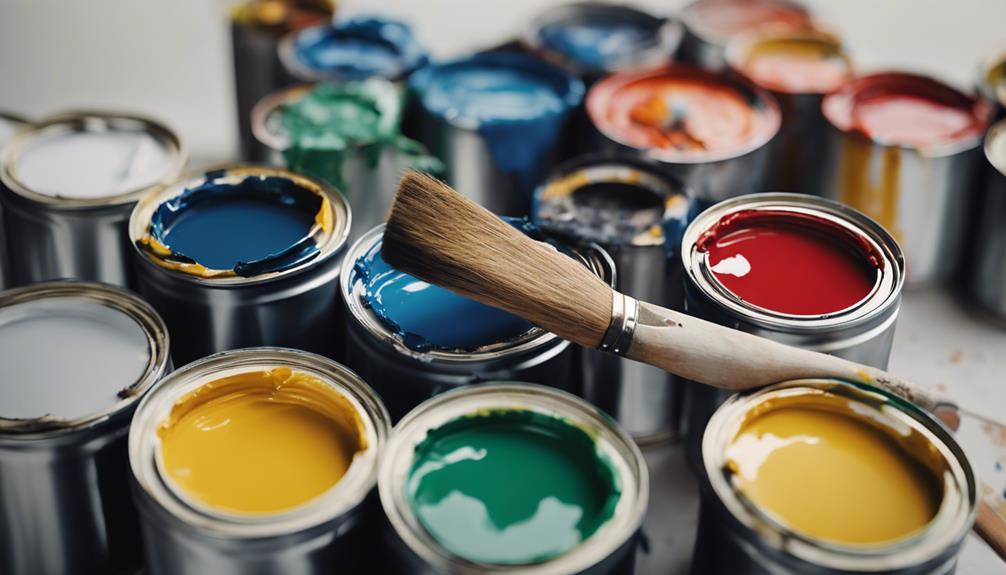
Investing in high-quality paint and materials for your interior painting project can greatly impact the overall cost and longevity of the finish. Higher quality paint may contribute to around 15-20% of the total painting cost, but it's worth it in the long run.
Premium brands like Sherwin Williams and Benjamin Moore are renowned for their durability and impeccable finish, ensuring your walls look stunning for years to come. Quality materials not only provide better coverage but also enhance adhesion, making sure the paint stays put.
Professional Skill and Expertise
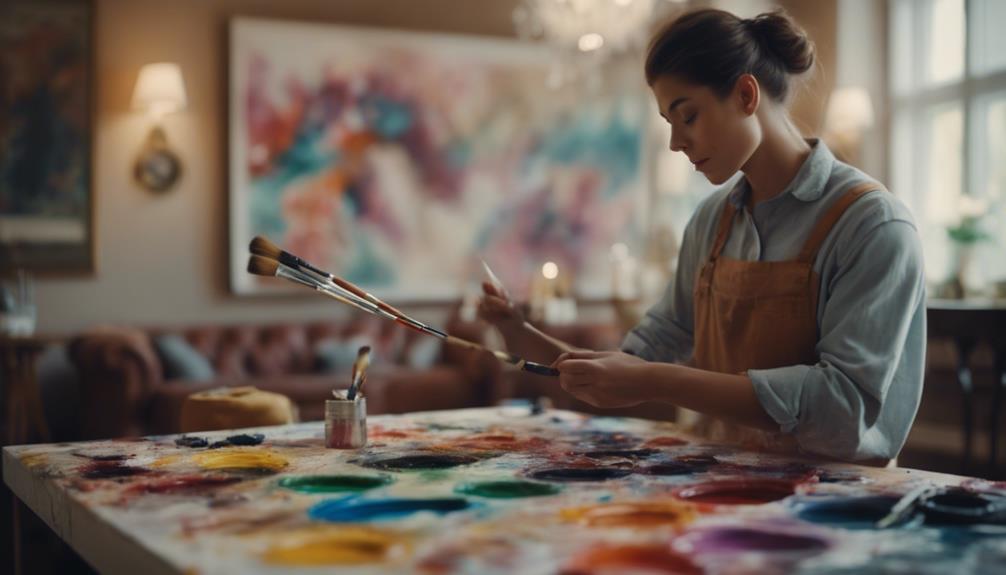
Experienced painters bring a level of precision and efficiency to your project that guarantees a professional and polished finish. Their specialized skills and expertise ensure a high-quality result that can only be achieved through years of practice and training. When you hire professional painters from reputable painting companies, you're investing in a professional paint job that will stand the test of time.
Professional painters possess a deep understanding of various painting techniques and best practices. They can efficiently handle complex tasks like intricate designs or textured surfaces, thanks to their knowledge and experience. Additionally, their expertise in color matching and application techniques adds significant value to the final result, ensuring a flawless outcome that enhances the overall aesthetics of your space.
While the cost of hiring professional painters may be higher, their training and experience justify the investment by delivering exceptional results that exceed your expectations. Trusting skilled professionals for your painting project guarantees a job well done and a beautifully finished space.
Longevity and Durability of Results
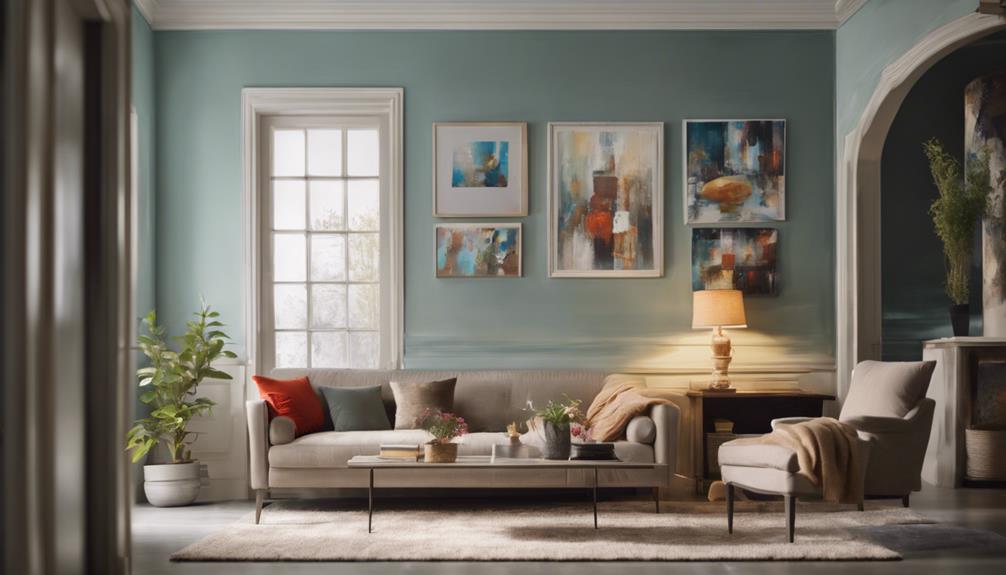
To guarantee a lasting and durable interior paint job, prioritize the longevity and durability of the results by investing in quality materials and skilled labor.
Quality materials play an essential role in the longevity of your interior paint. Opting for high-quality paint ensures that your walls not only look great but also maintain their appearance over time. When paired with proper application techniques, quality paint can protect your walls against wear and tear, increasing their durability.
Professional painters understand the importance of longevity and durability. By utilizing techniques that prioritize durability, they create a finish that can withstand daily use and cleaning, ensuring your paint job lasts.
Investing in premium materials and skilled labor might increase the initial cost of the paint job, but it leads to a finish that adds long-term value to your property. By focusing on durability and longevity, you can enjoy a beautifully painted interior that requires less frequent repainting, ultimately saving you time and money in the long run.
Frequently Asked Questions
Why Does Interior Painting Cost so Much?
Interior painting costs so much due to various factors. The labor-intensive prep work like sanding and priming, high-quality materials, and skilled painters all contribute to the expense.
Professionals use specialized techniques and tools, adding value to their service. Overhead costs and the time-consuming nature of the job also justify the price.
When you invest in quality interior painting, you're paying for expertise, durability, and a beautifully finished space.
Is It Cheaper to Paint Your Own House Interior?
Painting your own house interior can be cheaper, but it requires time and effort. You'll save on labor costs, but the quality may not match professionals.
For example, by tackling the project yourself, you could save hundreds of dollars. However, be prepared for a time-consuming task that demands attention to detail.
Consider the trade-offs between cost savings and the level of finish you aim to achieve.
Is Expensive Interior Paint Worth It?
When it comes to interior paint, splurging on a pricier option can be worth it. Expensive paint offers better coverage, durability, and color retention than cheaper alternatives.
The higher levels of pigments and resins in premium paints enhance color richness and finish longevity. Investing in quality paint guarantees a smoother application, better adhesion, and longer-lasting results for a superior finish in your space.
It's a smart choice for a lasting and satisfying outcome.
Why Is Paint Getting so Expensive?
Paint prices are skyrocketing for various reasons. Factors like increased raw material costs, eco-friendly paint formulations, and the demand for top-tier brands all play a role.
Technological advancements and quality assurance measures also contribute to the hefty price tags.
Conclusion
To sum up, interior painting may seem expensive, but it's worth the investment for a fresh and long-lasting look.
Just like buying a high-quality pair of shoes may cost more upfront, but they'll last longer and keep your feet happy.
So, think of interior painting as the stylish makeover your home deserves – a little pricey now, but totally worth it in the long run!
Interior
Do Interior Designers Do Construction
Peering into the world of construction, interior designers weave a tapestry of design magic, elevating spaces with their creative touch.

Yes, interior designers play a crucial role in construction. They focus on aesthetics, functionality, and detailed design elements to enhance the built environment. Collaborating with architects, builders, and contractors, they select materials, finishes, and lighting placements. Interior designers create personalized interior plans and 3D renderings, reducing decision-making burdens for clients. Their responsibilities include overseeing the installation of finishes, fixtures, and furnishings, ensuring projects stay on track. By working closely with construction professionals, interior designers contribute immensely to project success. Their impact on construction projects is profound, influencing design cohesion and enhancing overall project efficiency and client satisfaction.
Key Takeaways
- Interior designers oversee interior aspects within construction projects.
- They focus on aesthetics, materials, finishes, and spatial planning.
- Collaborate with architects, builders, and contractors for design cohesion.
- Ensure design plans are implemented accurately and efficiently.
- Interior designers enhance the overall look and feel of construction projects.
Interior Designers' Role in Construction
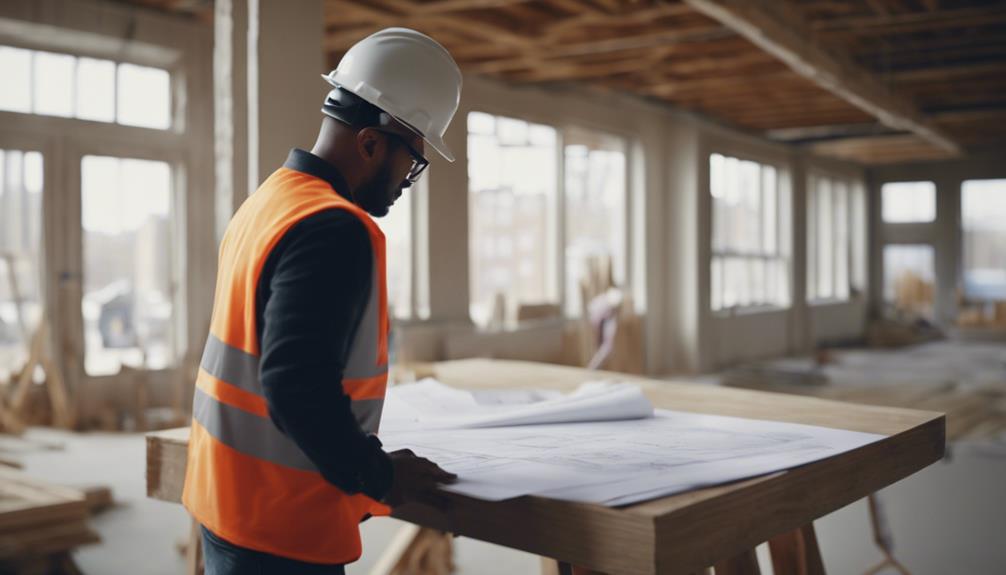
Interior designers play an essential role in construction projects by focusing on aesthetics, functionality, and detailed design elements. As an interior designer, your work goes beyond just making a space look pretty. You collaborate with architects, builders, and contractors to guarantee that the design isn't only beautiful but also practical and well-planned. Your responsibilities include selecting materials and finishes, deciding on lighting placements, and even arranging furniture to create a cohesive look.
Moreover, interior designers like yourself create personalized interior plans and 3D renderings to help clients visualize the end result. By taking on these tasks, you help reduce the decision-making burden on clients, making the process smoother and more enjoyable for them. Working closely with the construction team, you save time and money while ensuring that the client's needs and desires are met seamlessly. Your attention to detail and eye for design truly make a difference in bringing spaces to life.
Construction Collaboration With Interior Designers

Collaborating with construction teams, designers guarantee smooth alignment between design plans and structural requirements. Interior designers play an essential role in providing detailed interior plans for construction projects, including material selections and spatial layouts. By working closely with architects, contractors, and builders, designers enhance communication and ensure project cohesion.
Early collaboration with interior designers in the construction process is key to streamlining decision-making and preventing design conflicts. These professionals manage both the aesthetic and functional aspects of construction projects, ensuring that the end result meets both design vision and practical needs. Through their expertise in interior design principles and construction knowledge, designers contribute significantly to the success of building projects.
Responsibilities of Interior Designers in Construction
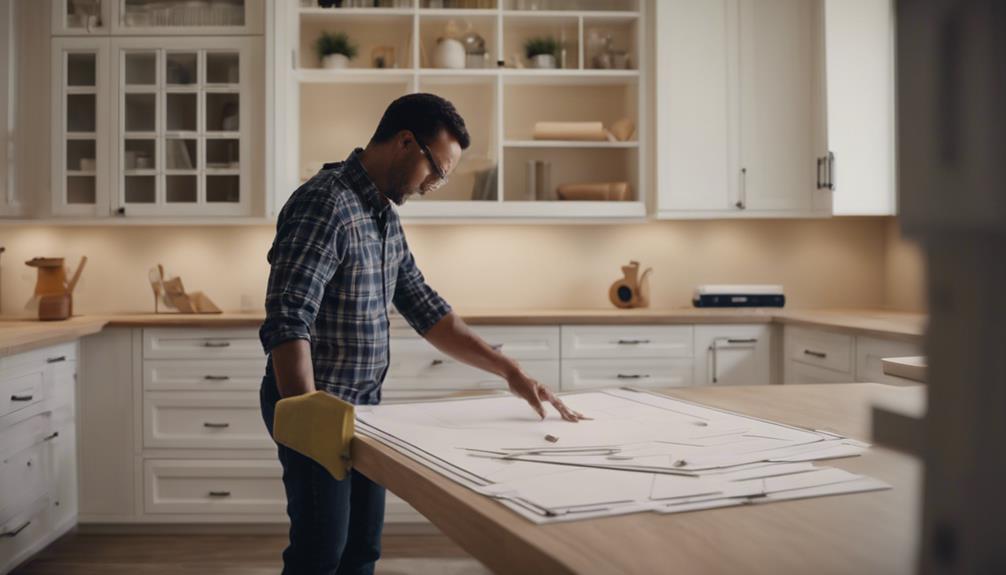
Playing an essential role in the construction process, interior designers focus on space planning, material selection, and aesthetic enhancement. They work closely with general contractors and subcontractors to make sure that the design vision is executed accurately. Interior designers oversee the installation of interior finishes, fixtures, and furnishings to bring the design concept to life. In addition to coordinating with architects and builders, they address vital aspects like lighting design, color schemes, and overall ambiance to create a harmonious and functional space.
Interior designers play a pivotal role in guaranteeing that the project stays on track and that the design intent is translated seamlessly into the built environment. Their attention to detail and creative input help elevate the overall quality of the construction project. By collaborating with the general contractor and other construction professionals, interior designers contribute significantly to the successful completion of a project that meets both aesthetic and functional requirements.
Interior Designers' Impact on Construction Projects
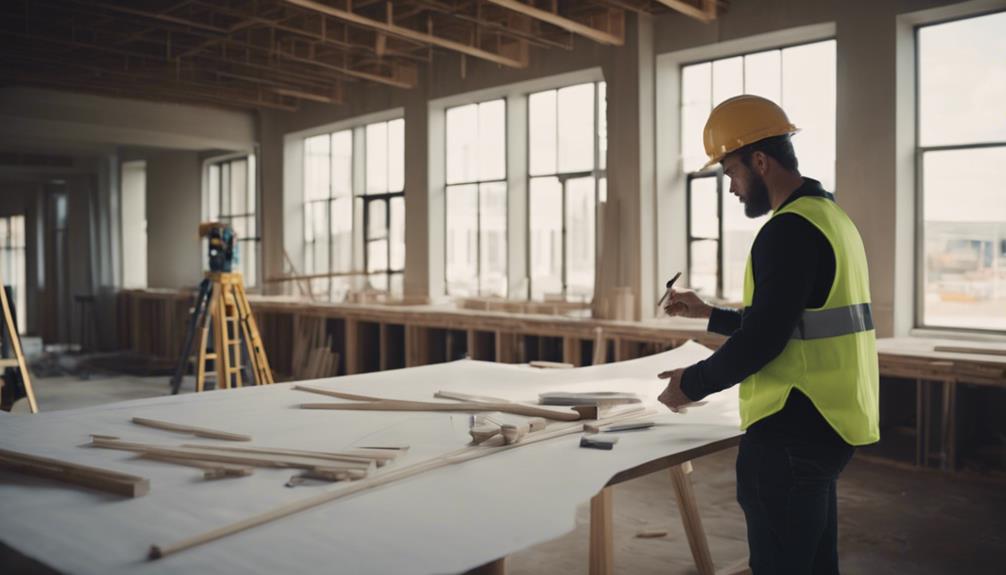
When it comes to construction projects, interior designers have a significant impact on the final result. They bring a unique design influence that enhances the aesthetic appeal and functionality of the space.
Design Influence on Construction
Interior designers wield significant influence over construction projects through their meticulous attention to aesthetics, functionality, and design cohesion. They impact the construction process by selecting materials, finishes, and design elements essential to the project.
Working closely with architects, builders, and contractors, interior designers ensure effective implementation of design plans. Their choices in lighting, furniture placement, and color schemes shape the construction outcome significantly.
Collaboration for Project Success
To guarantee the success of construction projects, interior designers prioritize collaboration with key professionals to align design visions with client preferences and streamline communication processes. By working closely with project managers, architects, contractors, and other team members, interior designers make certain that everyone is on the same page, enhancing project efficiency and client satisfaction. This collaborative effort is essential in project management to prevent delays, resolve issues promptly, and deliver high-quality results. Below is a table showcasing the key professionals that interior designers collaborate with to drive project success:
| Key Professionals | Role | Importance |
|---|---|---|
| Project Managers | Oversee the entire project | Guarantee timelines and budgets |
| Architects | Design the overall structure | Create the blueprint for construction |
| Contractors | Execute the construction work | Bring the design to life |
| Design Team Members | Contribute expertise in various design aspects | Ensure cohesive design execution |
Construction Process and Interior Designers

Throughout the construction process, interior designers play a pivotal role in guaranteeing that design plans are accurately executed by collaborating closely with construction teams. They provide detailed specifications for construction, including materials, finishes, and layout instructions. By working hand in hand with builders, interior designers ensure that the design and build aspects align seamlessly.
In addition to the technical aspects, interior designers oversee the aesthetic elements of construction, such as choosing color schemes, determining lighting placements, and finalizing furniture arrangements. Their collaboration with contractors is essential to guarantee that the construction process reflects the overall design vision effectively. Interior designers act as coordinators, ensuring that every step in the construction process contributes to a cohesive and well-executed final result.
Their attention to detail and creative input enhance the overall outcome, turning design plans into tangible, visually stunning spaces.
The Relationship Between Interior Designers and Construction

When it comes to the relationship between interior designers and construction, their collaboration is key to the success of a project.
By working closely together, designers and construction teams guarantee that the design vision is brought to life seamlessly.
This partnership allows for a harmonious blend of creativity and practicality, resulting in a well-executed final product.
Designers' Role in Construction
Interior designers play a pivotal role in construction projects by collaborating closely with architects, contractors, and builders to bring the client's vision for interior spaces to fruition. While they don't physically construct, they focus on aesthetics, functionality, and design cohesion.
Designers contribute to space planning, material selection, color schemes, lighting design, and furniture layouts. They make sure that design plans align with structural requirements, building codes, and client preferences. Their expertise in design principles and coordination with construction professionals are essential for achieving a well-executed and aesthetically pleasing end result.
Collaboration for Success
Collaborating closely with construction teams, interior designers make sure that design plans are executed accurately and efficiently. This collaboration is essential for the success of projects, ensuring that both aesthetic and functional aspects are seamlessly integrated. Here are four key ways in which interior designers and construction professionals work together for successful outcomes:
- Maintaining Communication: Interior designers work closely with contractors, architects, and builders to guarantee alignment throughout the construction process.
- Coordinating Design Elements: Designers play an important role in aligning design elements with construction requirements for a cohesive project outcome.
- Addressing Design Challenges: Their input helps in solving design challenges that may arise during construction, ensuring a smooth project progression.
- Achieving Desired Results: The relationship between interior designers and construction professionals is essential for achieving the desired results in residential and commercial projects.
Construction Execution by Interior Designers
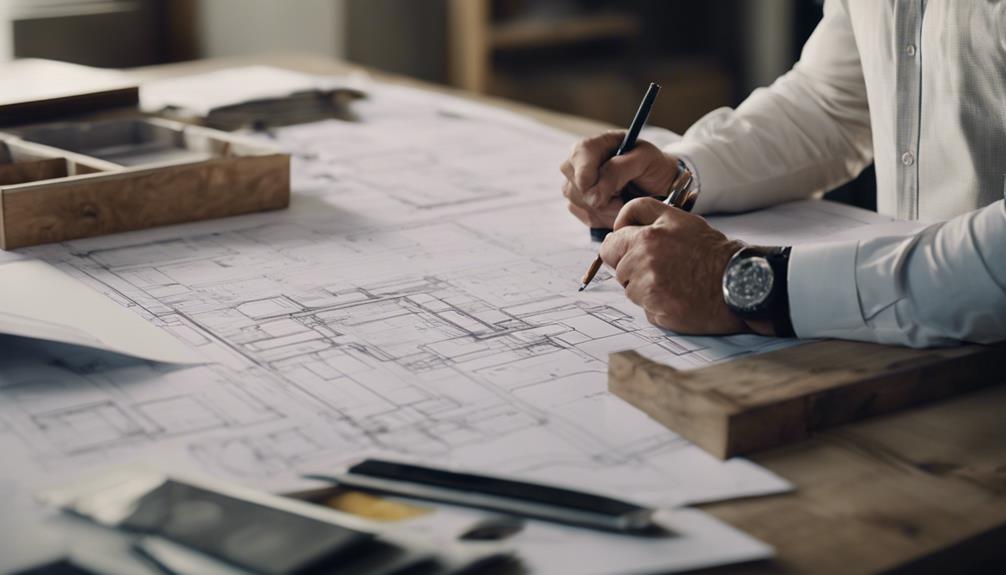
During the construction phase, interior designers actively oversee the implementation of design plans to guarantee alignment with the envisioned aesthetic and functionality of the space. Working within a design firm, they collaborate closely with contractors, builders, and tradespeople to make sure that the design vision is executed accurately and according to specifications.
Interior designers focus on the aesthetic and functional aspects of the project, supervising the selection and installation of finishes, furnishings, and fixtures to bring their design concepts to life. By managing the construction execution, interior designers play an essential role in ensuring that the final result meets the client's needs, preferences, and the overall design concept.
Their attention to detail and coordination with construction teams help create spaces that not only look visually appealing but also function effectively for their intended purposes. Interior designers bring creativity and practicality together to transform design plans into tangible, beautiful realities during the construction process.
Interior Designers' Contributions to Construction
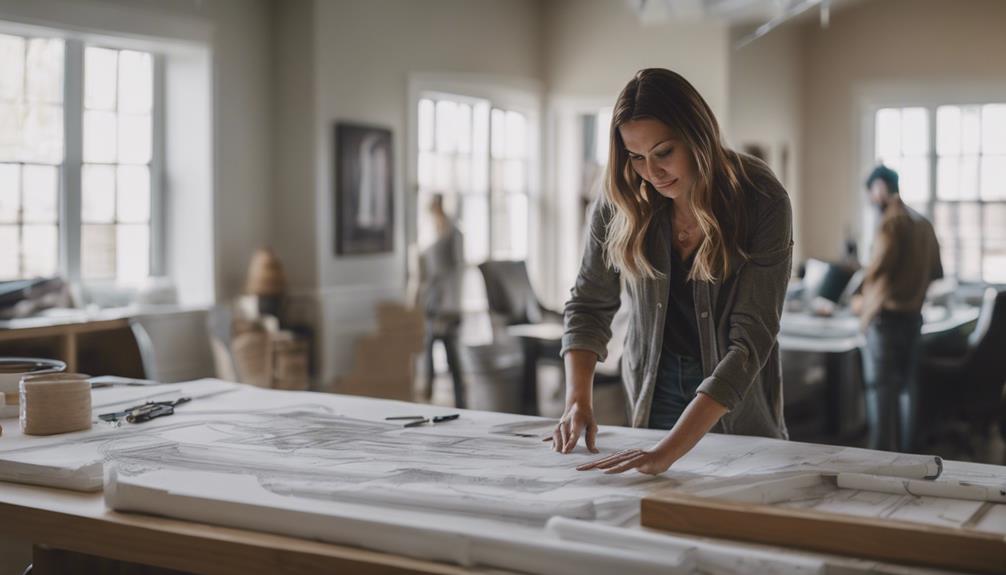
Enhancing construction projects with their expertise in aesthetics and functionality, interior designers play an essential role in guaranteeing cohesive design implementation. When it comes to their contributions to construction projects, interior designers bring a unique set of skills to the table. Here are some ways in which they add value to the design process:
- Consideration of Aesthetics: Interior designers focus on creating visually appealing spaces that align with the client's vision while also taking into account the overall design scheme of the project.
- Functionality Planning: They make sure that the layout and design elements not only look good but also serve a practical purpose, enhancing the usability and comfort of the space.
- Collaboration with Construction Team: Interior designers work closely with architects, builders, and contractors to integrate design elements seamlessly into the construction process, ensuring a harmonious end result.
- Attention to Detail: From material selections to lighting choices and furniture placement, interior designers pay attention to every detail to elevate the overall look and feel of the construction project.
Construction Project Management by Interior Designers

When it comes to managing construction projects, interior designers play a pivotal role in overseeing the coordination of building tasks. They guarantee that design elements are implemented seamlessly, materials are selected with care, and the overall aesthetics are maintained throughout the construction process.
Working closely with contractors and other professionals, interior designers bring their design vision to life by managing the project timeline and making critical on-site decisions.
Designers Oversee Construction
Interior designers play a pivotal role in overseeing construction projects to guarantee the accurate and efficient implementation of design visions. They manage the construction process by coordinating with contractors, architects, and other professionals involved in the project. Designers handle on-site supervision, quality control, and problem-solving to make certain the project's success. By overseeing construction, designers make sure that the design plans are executed according to specifications and within the budget. Their role in construction project management helps streamline communication, prevent delays, and maintain the overall design integrity of the project.
- Coordinate with contractors, architects, and other professionals.
- Handle on-site supervision and quality control.
- Confirm projects are within budget and specifications.
- Streamline communication and prevent delays.
Coordination of Building Tasks
In construction project management, interior designers play a pivotal role in coordinating building tasks to guarantee the seamless execution of design plans. They oversee the aesthetic and functional aspects of projects, collaborating closely with contractors, architects, and other professionals. Managing material selection, finishes, and furnishings alignment with the design plan is essential. Communication and collaboration are key, ensuring project efficiency. By providing detailed guidance on design elements and effective task coordination, interior designers streamline the construction process.
| Key Role of Interior Designers | Importance |
|---|---|
| Coordination with Contractors | Ensures design vision accuracy |
| Material Selection Management | Aligns with design plans |
| Communication and Collaboration | Maintains project efficiency |
| Task Coordination | Streamlines construction process |
Interior Designers' Influence on Construction Outcome

To optimize construction outcomes, interior designers wield significant influence through meticulous planning and precise specifications. Here are four key ways interior designers impact construction projects:
- Alignment with Client Needs: Interior designers ensure that design plans meet the specific needs and preferences of the client, enhancing overall satisfaction.
- Guiding Construction Teams: Their detailed specifications guide construction teams, reducing the need for constant client involvement in minor decisions during the project.
- Collaboration with Builders and Architects: By working closely with builders and architects, interior designers help prevent costly modifications and revisions, leading to smoother construction processes.
- Protecting Budget and Investment: Interior designers play a vital role in safeguarding the client's budget and investment by being actively involved in the drawing phase, ensuring financial considerations are met throughout the project.
Frequently Asked Questions
What Is an Interior Designer's Role in the Construction Process?
In the construction process, an interior designer plays a vital role in ensuring the aesthetic and functional aspects of a space come together harmoniously. Collaborating with architects, builders, and contractors, you focus on details like material selections, furniture layouts, and lighting design to bring the design plans to life.
Your expertise guides decision-making on design elements and spatial planning, creating personalized interiors that reflect the client's vision seamlessly.
What Is the Difference Between a Contractor and an Interior Designer?
Contractors focus on the physical construction, while interior designers emphasize aesthetics and functionality. Interior designers create cohesive design plans, select materials, and enhance the overall look and feel of a space.
Contractors handle permits, scheduling, and on-site work, while interior designers focus on color schemes, furniture layout, and lighting design. Interior designers work closely with clients to understand their needs and preferences, translating them into personalized design solutions.
What Does a Designer Do in Construction?
In construction, a designer plays a crucial role in creating cohesive design plans that blend aesthetics, functionality, and client preferences. They collaborate with architects, builders, and contractors to guarantee seamless integration of design elements.
From material selection to furniture layout, designers bring your vision to life. Their attention to detail in areas like electrical layouts and space utilization guarantees a smooth construction process.
Ultimately, designers are key players in turning ideas into reality.
Do Interior Designers Build Things?
In the world of interior design, creativity knows no bounds! Interior designers don't physically construct things, but they're the masterminds behind the magic.
Your role involves dreaming up stunning spaces, selecting materials, and working closely with construction teams to bring visions to life. From picking paint colors to choosing furniture, your design expertise shines through every detail.
Conclusion
So, next time you see a construction site, remember that interior designers play a key role in making it look fabulous. They don't just pick pretty colors and furniture; they help plan and manage the entire project from start to finish.
Without them, construction projects would lack that extra touch of style and functionality. So, give a shoutout to all the interior designers out there making our buildings look amazing!
-
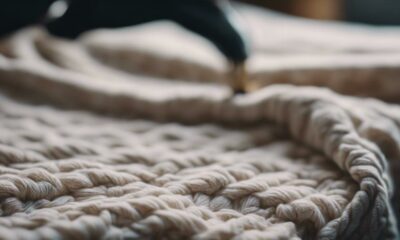
 Decorative Throws2 weeks ago
Decorative Throws2 weeks agoIs It Better to Dry Clean Blankets?
-

 Yarn2 weeks ago
Yarn2 weeks agoIs Yarn Natural or Manmade? Unravel the Truth
-
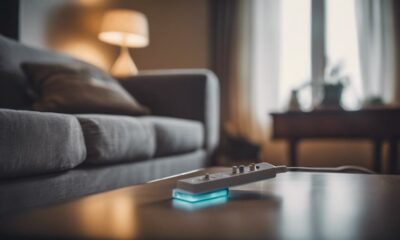
 Decorative Throws2 weeks ago
Decorative Throws2 weeks agoWhat Wattage Is an Electric Throw
-

 Decorative Throws2 weeks ago
Decorative Throws2 weeks agoCan I Use a Throw Blanket as a Rug
-

 Yarn2 weeks ago
Yarn2 weeks agoUnravel the Mystery: Why Are Yarn Specs a Secret?
-
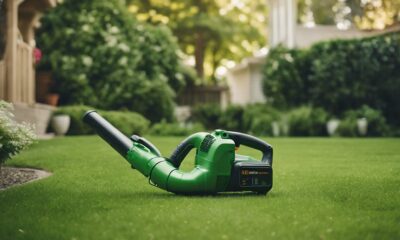
 Craft and Textiles2 weeks ago
Craft and Textiles2 weeks ago15 Best Battery-Powered Leaf Blowers for Effortless Yard Work
-

 Tableware and Dining Accessories2 weeks ago
Tableware and Dining Accessories2 weeks agoWhat Is the Meaning of the Word Tableware
-

 Craft and Textiles2 weeks ago
Craft and Textiles2 weeks ago15 Best Toast Recipes to Start Your Day Right













